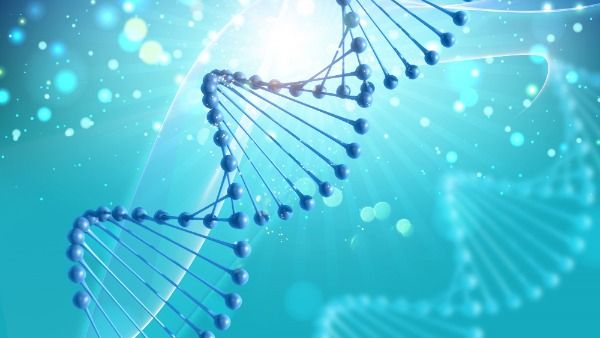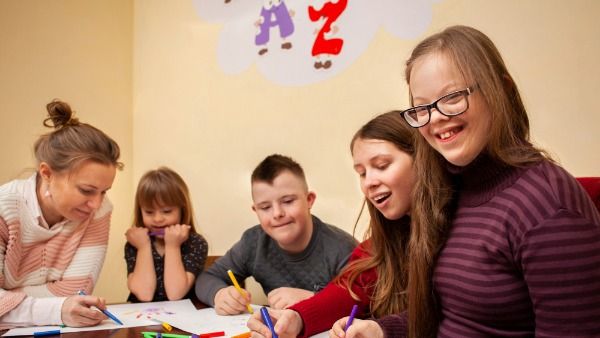Just In
- 3 hrs ago

- 12 hrs ago

- 14 hrs ago

- 15 hrs ago

Don't Miss
- Sports
 Who Won Yesterday's IPL Match 40? DC vs GT, IPL 2024 on April 24: Delhi Capitals Clinch High-Scoring Thriller At Kotla
Who Won Yesterday's IPL Match 40? DC vs GT, IPL 2024 on April 24: Delhi Capitals Clinch High-Scoring Thriller At Kotla - Education
 JEE Main 2024 Result Out on jeemain.nta.ac.in, 56 Students Secured 1st Rank With 100 Percentile
JEE Main 2024 Result Out on jeemain.nta.ac.in, 56 Students Secured 1st Rank With 100 Percentile - News
 Mangalsutra Row: Did Indira Gandhi Donate Gold During The 1962 War? The Facts Behind Priyanka's Claim
Mangalsutra Row: Did Indira Gandhi Donate Gold During The 1962 War? The Facts Behind Priyanka's Claim - Movies
 Kota Factory 3 OTT Release Date, Platform: When Will Jitendra Kumar's Web Series Premiere On Netflix?
Kota Factory 3 OTT Release Date, Platform: When Will Jitendra Kumar's Web Series Premiere On Netflix? - Travel
 Escape to Kalimpong, Gangtok, and Darjeeling with IRCTC's Tour Package; Check Itinerary
Escape to Kalimpong, Gangtok, and Darjeeling with IRCTC's Tour Package; Check Itinerary - Finance
 DCB Bank Q4 Results: PAT Grew 9% To Rs 156 Cr, NII Jumps 4.5%; Dividend Declared
DCB Bank Q4 Results: PAT Grew 9% To Rs 156 Cr, NII Jumps 4.5%; Dividend Declared - Technology
 OPPO Find X7 Ultra Camera Deep-Dive: Pushing the Boundaries of Photography on a Smartphone
OPPO Find X7 Ultra Camera Deep-Dive: Pushing the Boundaries of Photography on a Smartphone - Automobiles
 Aston Martin Vantage Launched In India At Rs 3.99 Crore
Aston Martin Vantage Launched In India At Rs 3.99 Crore
What Is Rett Syndrome, A Disorder Highly Found In Females? Causes, Symptoms And Treatments
Rett syndrome (RTT) is a neurodevelopmental disorder highly prevalent in females compared to males. This rare disorder affects 1 out of 10000-15000 live female births and is a common cause for complex mental disability in girls characterised by dysfunction of the autonomic nervous system which is responsible for cognitive, motor and communication skills. [1]

Photo Credit: Girl photo created by master1305 - www.freepik.com
According to a study, babies with RTT grow physically and neurologically until the age of 6 to 18 months, and the symptoms often start appearing progressively over many stages such as rapid regression (1-4 years of age), pseudostationary (at the age of two) and late motor deterioration (by the age of 10). [2]
In this article, we will discuss details of Rett syndrome. Take a look.


Causes Of Rett Syndrome
Rett syndrome is known to have been caused by mutations in the gene MeCP2 which is found in the X chromosome (one of the two sex chromosomes).
Males have one X chromosome and one Y chromosome while females have both X chromosomes. As the mutation happens only in the X chromosome, the females naturally become more prone to getting affected by this disorder compared to males.
Also, MeCP2 mutation is likely to occur in the sperm cells than in ovarian cells, meaning the risk of inheriting the RTT gene is greater from the father's side. [3]

The MeCP2 gene contains instructions to manufacture proteins that help with the development of the brain. This is why, when a mutation in the MeCP2 gene happens, the brain functions are affected.
According to the National Institute of Neurological Disorders and Stroke, not everyone with mutations in the MeCP2 gene has RTT and in less than one per cent of the cases, the disorder is inherited, meaning the disorder is unlikely to pass from one generation to another and in most of the cases, appear spontaneously due to random mutation.
Photo Credit:Background photo created by kjpargeter - www.freepik.com

Stages And Symptoms Of Rett Syndrome
The symptoms of Rett Syndrome depend on its four clinical stages. They are:
1. Stagnation (Stage 1): It occurs between the age of 6-18 months. The symptoms noticed are: [4]
- Sudden changes in the interactive behaviours of the child such as lesser eye contact and reduced interest in toys.
- Developmental delays such as inability in crawling, vocalisation or sitting.
- Decreased muscle tone that causes problems in movement.
- Microcephaly or pause in the development of baby's head making it look smaller than babies of the same age.
- Frequent crying
- Sudden regression of abilities that are acquired.
- High-pitched crying
- Unexplained fever
- Complete change in the personality of the child due to decline in motor and communicative abilities.
- Loss of visual contact of a child to their parents.
- Recurrent infections.
- Febrile seizures
- Unexplained hypersalivation or muscle twitching around the mouth.
- Breathing irregularities.
- Continuous movements such as hand clapping or hand wringing.
- Return of visual contact of the child to express needs and wishes.
- Breathing difficulties
- Unexplained night laughing.
- Nighttime awakening and daytime sleeping habits.
- Sudden agitation.
- A sensation of cold in the feet or lower limbs.
- Deformation of the ankles.
- When this stage starts, the walking of the child is affected and they may become wheelchair-dependent.
- Some may never learn to walk.
- Severe neurological impairment.
- Feet and lower limbs are cold with discolouration.
- Hand activities frequent clapping gets less.
- Lack of motor abilities leads to frozen rigidity.
- Visual contact remains intact.
2. Rapid Developmental Regression Period (Stage 2): It occurs between the ages 1-4 years and is characterised as: [5]

3. The Pseudo-Stationary Stage (Stage 3): It usually occurs between the ages 2-10 years and starts after the completion of the regression stage. The symptoms include:
Note: In this stage, a child can still new things and if walking is already acquired by the child, they may be able to do so. A child with RTT also has increased alertness and eye behaviours.
4. Late Motor Deterioration (Stage 4): It occurs after the age of 10 and can last for many years or decades. Symptoms include:
Photo Credit:Woman photo created by freepik - www.freepik.com

Complications Of Rett Syndrome
Some of the complications of Rett syndrome may include:
- The inability of the child to express themselves.
- Metabolic complications such as high cholesterol levels. [6]
- Gastrointestinal problems
- Problems related to the functioning of the bones and muscles.
- Mental health problems due to lack of social life.
- Short life span due to multiple disorders following Rett syndrome.

Diagnosis Of Rett Syndrome
Rett syndrome is usually diagnosed by analysing the aforementioned symptoms present in the child during their growth and development. However, there are criteria that need to be fulfilled for the exact diagnosis of the condition. [7]
In some cases, a child may present RTT-like symptoms but does not meet the diagnosis criteria. This is categorised as atypical RTT, in which gene mutation is present but exact symptoms lack.
Genetic testing helps identify the presence of the MeCP2 gene.

Treatments Of Rett Syndrome
- Studies say that there is no exact cure for Rett syndrome and most of the treatment methods for the condition include management of the symptoms such as seizure control and nutrition and supportive approach.
- Medications to prevent complications related to lung and gastrointestinal functions is given and regular monitoring is suggested, at least until the child gets younger.
- Surgery is suggested in case the child develops walking problems or scoliosis (sideways curvature of the spine instead of straight).
- Special attention is given to treating seizures with anti-seizure medications.
- Patient-specific programs to improve communication and movement.

To Conclude
Early diagnosis and management of Rett syndrome can help improve the health and longevity of children suffering from it.
- What is the life expectancy for Rett syndrome?
According to a StarPearl study, the life expectancy of an individual suffering from Rett syndrome may vary depending on the type of mutation of the MeCP2 gene. Some may survive till adulthood and even the 40s or 50s. The longevity also depends on the early diagnosis and management of the condition.
- What is Rett syndrome caused by?
Rett syndrome is a neurodevelopmental disease mainly caused due to mutation in the gene MeCP2 found in the X-chromosome, which is one of the two sex chromosomes in humans. The disease is inheritable in less than one per cent of cases and random in many cases.
-
 womenFree The Nipples: Will Going Bra-Less Ever Be Considered Normal?
womenFree The Nipples: Will Going Bra-Less Ever Be Considered Normal? -
 disorders cureWhat Happens If Testosterone Is High In Women? Causes, Symptoms And Treatments Of Hyperandrogenemia
disorders cureWhat Happens If Testosterone Is High In Women? Causes, Symptoms And Treatments Of Hyperandrogenemia -
 disorders cureTurner Syndrome: Causes, Symptoms, Complications And Treatments
disorders cureTurner Syndrome: Causes, Symptoms, Complications And Treatments -
 wellnessEarly Life Stress May Up Binge Eating In Females
wellnessEarly Life Stress May Up Binge Eating In Females -
 relationshipFemale Lawyers Less Likely To Make Partner
relationshipFemale Lawyers Less Likely To Make Partner -
 healthWorld Autism Awareness Day 2024 Wishes: Messages, Images, Greetings, Texts, Twitter And WhatsApp Status
healthWorld Autism Awareness Day 2024 Wishes: Messages, Images, Greetings, Texts, Twitter And WhatsApp Status -
 healthExclusive: On World Autism Day 2024, Let Us Empower Parents With Positive Strategies For Autism Care
healthExclusive: On World Autism Day 2024, Let Us Empower Parents With Positive Strategies For Autism Care -
 pregnancy parentingWorld Autism Day: Myths About Austism That Parents Should Steer Clear From, Best Conversation Starting Books
pregnancy parentingWorld Autism Day: Myths About Austism That Parents Should Steer Clear From, Best Conversation Starting Books -
 healthPremam Movie Director’s Instagram Post: Can You Self-Diagnose Autism Spectrum Disorder?
healthPremam Movie Director’s Instagram Post: Can You Self-Diagnose Autism Spectrum Disorder? -
 kidsSigns Of Autism In Children: What To Look Out For
kidsSigns Of Autism In Children: What To Look Out For -
 disorders cureDo You Twirl Or Pull On Your Hair? It Could Be A Sign Of Anxiety, OCD Or Autism
disorders cureDo You Twirl Or Pull On Your Hair? It Could Be A Sign Of Anxiety, OCD Or Autism -
 wellnessCommon Myths And Facts About Autism You Need To Know
wellnessCommon Myths And Facts About Autism You Need To Know


 Click it and Unblock the Notifications
Click it and Unblock the Notifications



